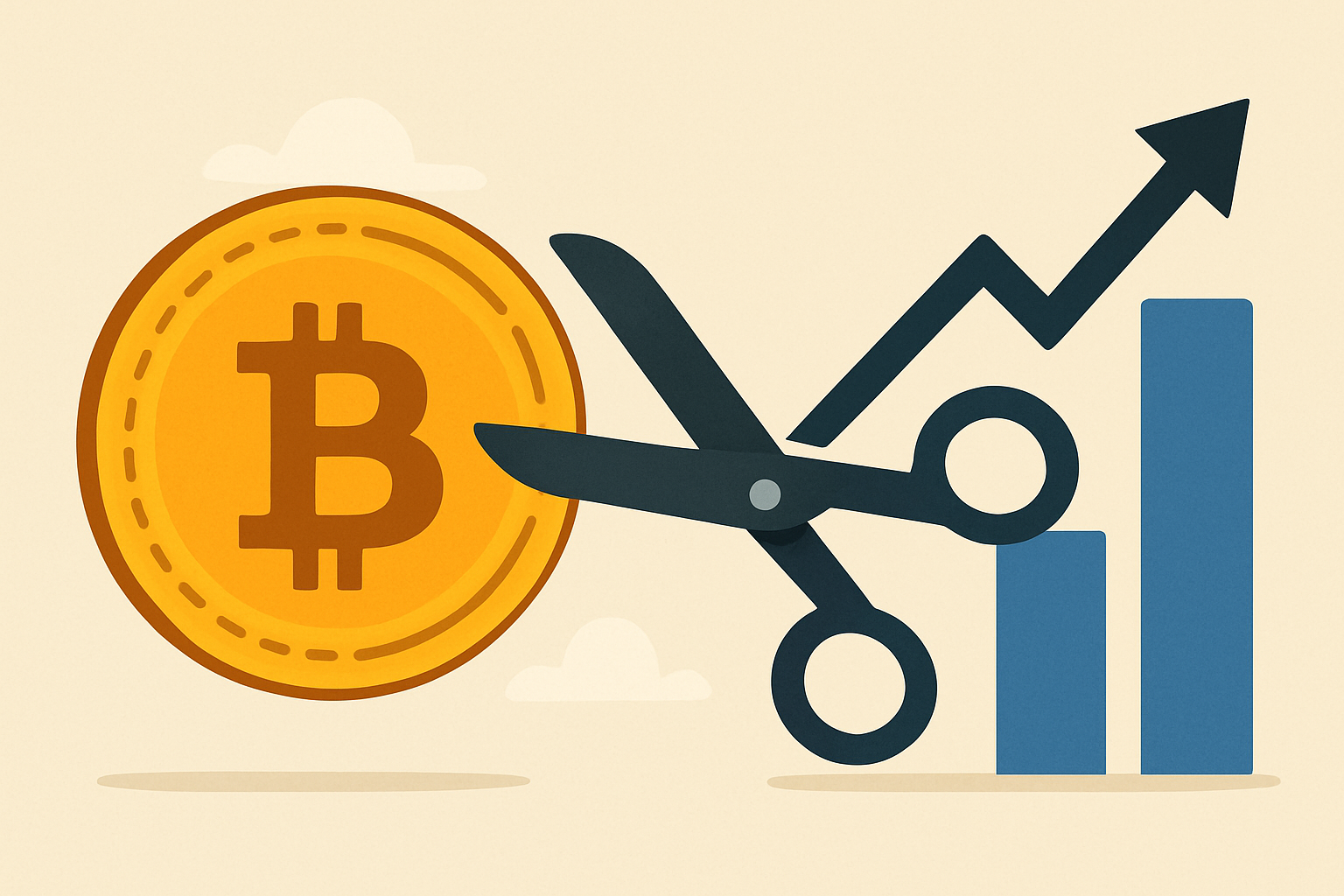
Introduction: The Buzz Around “Bitcoin Halving”
Every four years, the cryptocurrency world comes alive with discussion and anticipation of a landmark event: the “Bitcoin halving.” But what exactly is Bitcoin halving, and why does it stir up so much attention from investors, miners, and analysts worldwide? To understand the pulse of the crypto market, it’s crucial to grasp how Bitcoin halving works and the historical effects it has had—especially on Bitcoin’s price.
The Basics: What Is Bitcoin Halving?
Bitcoin halving is a programmed event within the Bitcoin network that reduces the reward for mining new blocks by 50%. This halving occurs every 210,000 blocks—roughly every four years—and continues until the maximum supply of 21 million bitcoins is reached. This fixed issuance schedule is the backbone of Bitcoin’s anti-inflationary design.
When Bitcoin was launched in 2009, miners received 50 bitcoins for every block added to the blockchain. The first halving (2012) cut that reward to 25 bitcoins, the second (2016) to 12.5, the third (2020) to 6.25, and the fourth (2024) to just 3.125 bitcoins per block.
Why Bitcoin Halving Matters
- Scarcity and Supply Control: Halving systematically slows the introduction of new bitcoins, ensuring scarcity.
- Deflationary Pressure: With fewer new coins created, Bitcoin becomes a deflationary asset if demand remains steady or rises.
- Mining Incentives: Each halving tests the profitability of mining, pushing less efficient operations out and keeping only the strongest participants.
A Year-by-Year Look: Bitcoin’s Price Performance
Bitcoin’s price history is a story of extreme volatility, driven in part by its halvings and increasing adoption. Here’s a year-by-year snapshot of Bitcoin’s price increases since its inception, highlighting the general upward trend and the impact of each halving cycle:
| Year | Start Price (USD) | End Price (USD) | % Increase |
|---|---|---|---|
| 2010 | ~$0.003 | ~$0.30 | ~9,900% |
| 2011 | ~$0.30 | ~$4.70 | ~1,467% |
| 2012 | ~$4.70 | ~$13.50 | ~187% |
| 2013 | ~$13.50 | ~$805 | ~5,863% |
| 2014 | ~$805 | ~$320 | -60% |
| 2015 | ~$320 | ~$430 | ~34% |
| 2016 | ~$430 | ~$960 | ~123% |
| 2017 | ~$960 | ~$13,880 | ~1,346% |
| 2018 | ~$13,880 | ~$3,700 | -73% |
| 2019 | ~$3,700 | ~$7,200 | ~95% |
| 2020 | ~$7,200 | ~$28,900 | ~302% |
| 2021 | ~$28,900 | ~$47,700 | ~65% |
| 2022 | ~$47,700 | ~$16,600 | -65% |
| 2023 | ~$16,600 | ~$42,000 | ~153% |
| 2024 | ~$42,000 | ~$60,000* | ~43% |
*End-of-year and 2024 price estimated based on the latest available data.
What Does This Data Show?
- Halving Cycles: Notice that some of Bitcoin’s largest gains occurred in the year following a halving event (2012, 2016, 2020), supporting the idea that reduced supply often leads to higher prices when demand holds strong.
- Booms and Busts: Bitcoin’s price history features massive rallies and equally significant corrections, highlighting its volatility.
- Long-Term Trend: Despite sharp pullbacks, Bitcoin’s multi-year trajectory remains upward, fueled by its capped supply and growing adoption.
Halving and Public Markets
Bitcoin halvings do not just affect the cryptocurrency itself; they can reverberate across public markets. For example, after previous halvings, companies such as Coinbase (NASDAQ: COIN) have seen notable surges in trading activity and user growth, reflecting broader interest in crypto assets.
How Halving Works: The Technical Details
The halving process is coded into Bitcoin’s protocol and occurs without human intervention. Every 210,000 blocks—roughly every four years—the reward for mining a new block is halved. This automatic event continues until the final bitcoin is mined, projected around the year 2140, after which miners will rely solely on transaction fees.
Risks and Rewards: What Investors Should Know
Bitcoin halving brings excitement, but also uncertainty:
- Mining Profitability: Each halving can make mining unprofitable for smaller or less efficient operations, which may exit the network.
- Price Volatility: While past halvings have preceded price rallies, they are also periods of heightened speculation and risk.
- Regulation: Global regulatory moves can impact the price and adoption of Bitcoin regardless of its supply schedule.
Looking Forward: The 2028 Halving and Beyond
The next halving is expected in 2028, reducing block rewards to 1.5625 bitcoins. As halvings continue, Bitcoin’s annual inflation rate will approach zero, making it one of the most scarce assets in history if current protocol rules persist.
Conclusion
Bitcoin halving is a cornerstone event in the crypto economy. By slashing new supply, it creates scarcity and often sparks price rallies, but also puts pressure on miners and introduces new risks. The historical price increases around halving events have drawn mainstream attention and investment, but volatility remains a hallmark. Whether you’re a miner, investor, or just curious about digital assets, understanding halving cycles is essential for navigating the future of Bitcoin.
Disclaimer: This article is for informational purposes only and does not constitute financial or investment advice. Cryptocurrency investments carry significant risks and may result in total loss. Please consult with a qualified financial advisor before making any investment decisions.






